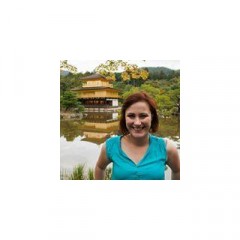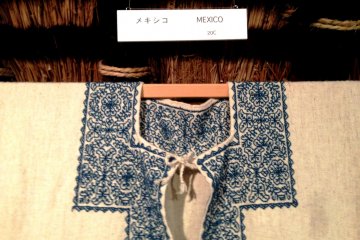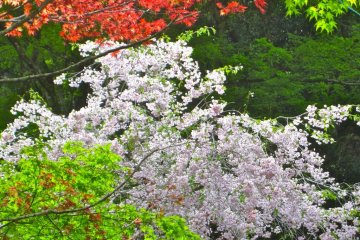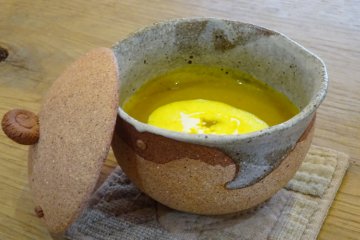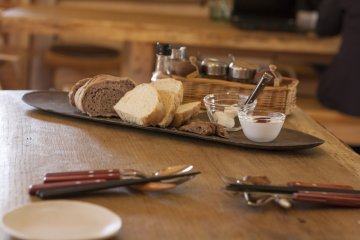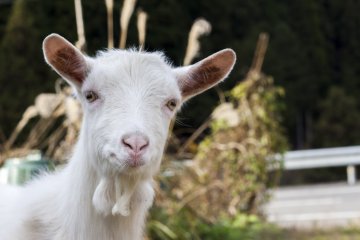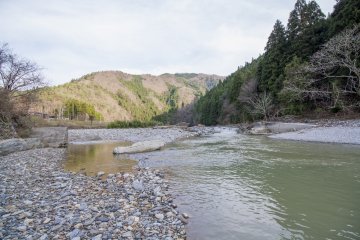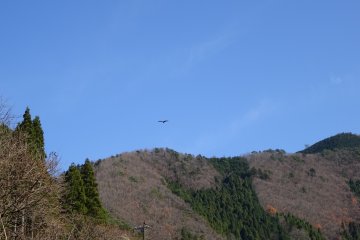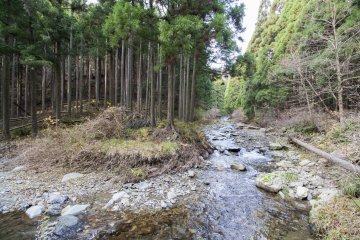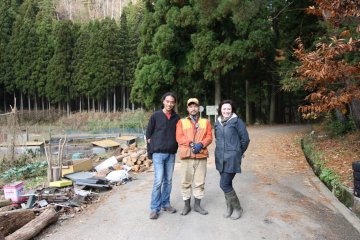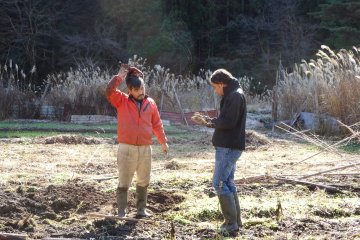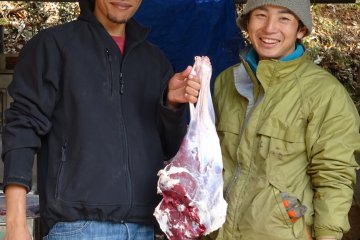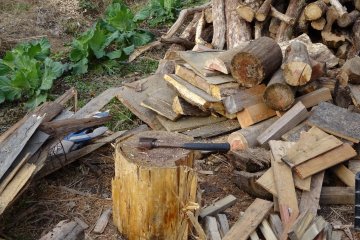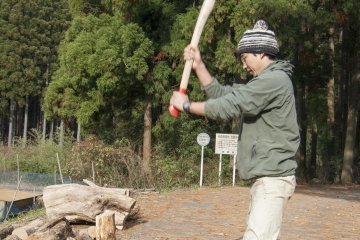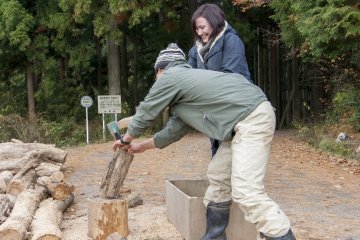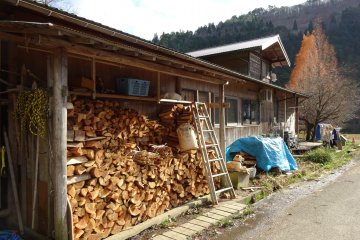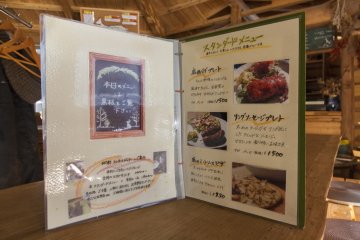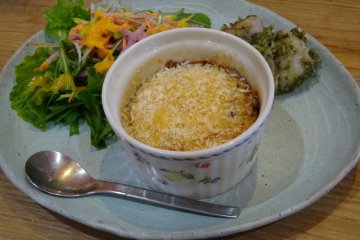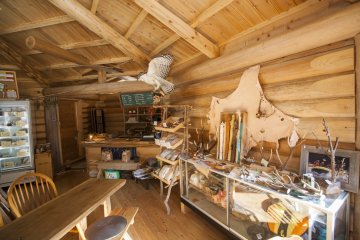Tautasya farm, lodge and slow food restaurant, located a short distance from the traditional Kayabuki (thatched roof) village in the Miyama hills, offers a unique, diverse and authentic experience of rural Japanese life. The site, owned and run by Homaru Fujiwara and his wife Yu, offers visitors the chance to engage in a wide range of agricultural and adventure activities and enjoy farm fresh food in an idyllic rural setting.
Having moved to a Japanese city from the Irish countryside in August, my husband and I were thrilled to have the opportunity to exchange the hustle and bustle of urban life for a short spell in the Kyoto hills. Our journey from Sonobe Station to Tautasya was spent in awe at the landscape: spectacular hills, dense with cedar forest and rich with wildlife, flank valleys traversed by crystal-clear streams. Miyama is an area that begs to be explored.
We were met at Tautasya by Homaru Fujiwara, a young farmer who began constructing the house, restaurant, lodge and outhouses on the site ten years ago. Since then, he and his wife have expanded the farm to offer agricultural and adventure activities to national and international travellers in search of an alternative experience of the Japanese way of life. Our host gave us an introductory tour of the site, of which he is understandably proud: the small Tautasya community is largely self-built and self-sufficient. Food is grown in the extensive gardens and greenhouses and hunted in the surrounding hills, while other resources are also self-replenishing and ecologically-friendly, with energy obtained from solar panels and off-grid water collected naturally in a large cistern on the hillside. When asked what they needed to get from the store, Fujiwara-san joked, ‘Ketchup?’
Eager to share the unique delights of the Japanese countryside with his guests, Fujiwara-san plied us with tastes fresh from the farm: a sun-dried persimmon cut from its rope, a selection of salad leaves plucked from the ground, a warm cup of goat’s milk straight from the source, a carrot pulled from the earth and rinsed in the icy-cold stream. Though we had little in the way of a common language, communication was rarely difficult – our host’s passion for his work and the local area was infectious, and allowed us to overcome any potential barriers with ease and humor.
Tour over, we were put to work. Fujiwara-san demonstrated how to dig for kikuimo [Jerusalem artichokes], showing us how to turn the soil and pan the earth with our fingers to locate the tubers. Once we found our rhythm, we were left to our own devices while our host moved off in search of the more elusive nagaimo [mountain yam]. It is difficult to overstate the therapeutic value of spending a morning in the hills, our hands in the earth, breathing in the crisp mountain air and watching eagles soaring overhead. Time passed quickly, and soon our wheelbarrow was half-full and Fujiwara-san had retrieved an impressive nagaimo from the ground, leaving behind a small crater in the earth. These prized vegetables grow to an astonishing depth, and such farming requires great skill, care and patience. Once again, we had the opportunity to sample this Japanese delicacy – which we so often purchase from the supermarket – fresh from the ground.
While we helped out on the farm, Yu-san prepared us a delicious lunch served to us in the warm, hand-built restaurant/store. To say this cabin is beautifully decorated doesn’t do it justice. It is adorned with elements of the surrounding wilds: antlers, deer-hide, and other natural wonders surrounded us as we ate. The meal delighted us with home-grown vegetables and freshly baked loaves made with goat’s milk and black rice flour, but the main feature was a succulent homemade venison burger, the provenance of which we were to discover first-hand after lunch.
Hunting season had just begun, and our hosts were busy preparing the wild deer and boar that they and other local hunters had caught in the surrounding hills. As guests, we were given the opportunity to help skin and butcher a deer, caught that morning by Yoshi-san, our sensei for this event. I chose to observe from a distance, but my husband was happy to be involved, and felt honoured to learn the basics of such a primal craft from people of such skill and dedication. Though different to working with the earth, this experience brought its own sense of peace and connectedness, and offered a unique insight into the character of agricultural life on the outskirts of Kyoto. It was a joy to see that so close to a major urban centre in Kansai, such processes and values inform the pace of life among young and old alike.
Our visit to Tautasya left us eager to return soon. Though this experience was typical of the season in which we visited, Fujiwara-san and his team offer a broad selection of agricultural activities throughout the year and also facilitate adventure activities such as skiing in the winter and rafting and kayaking the summer.
Tautasya can be accessed by car from Kyoto (approximately. 2 hour drive). Alternatively, transport can be arranged from Sonobe JR station for a fee. Further details available on Tautasya’s website.


